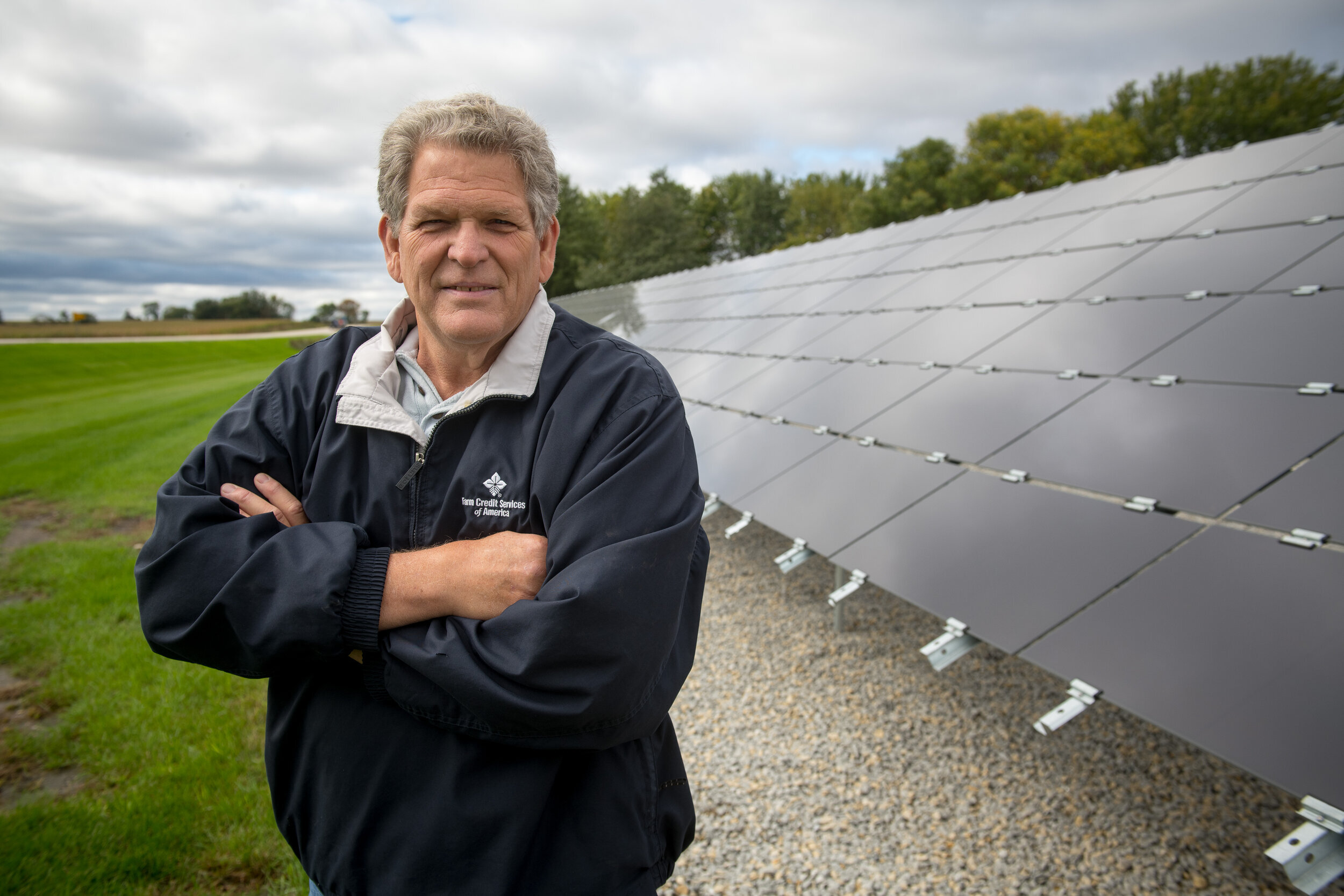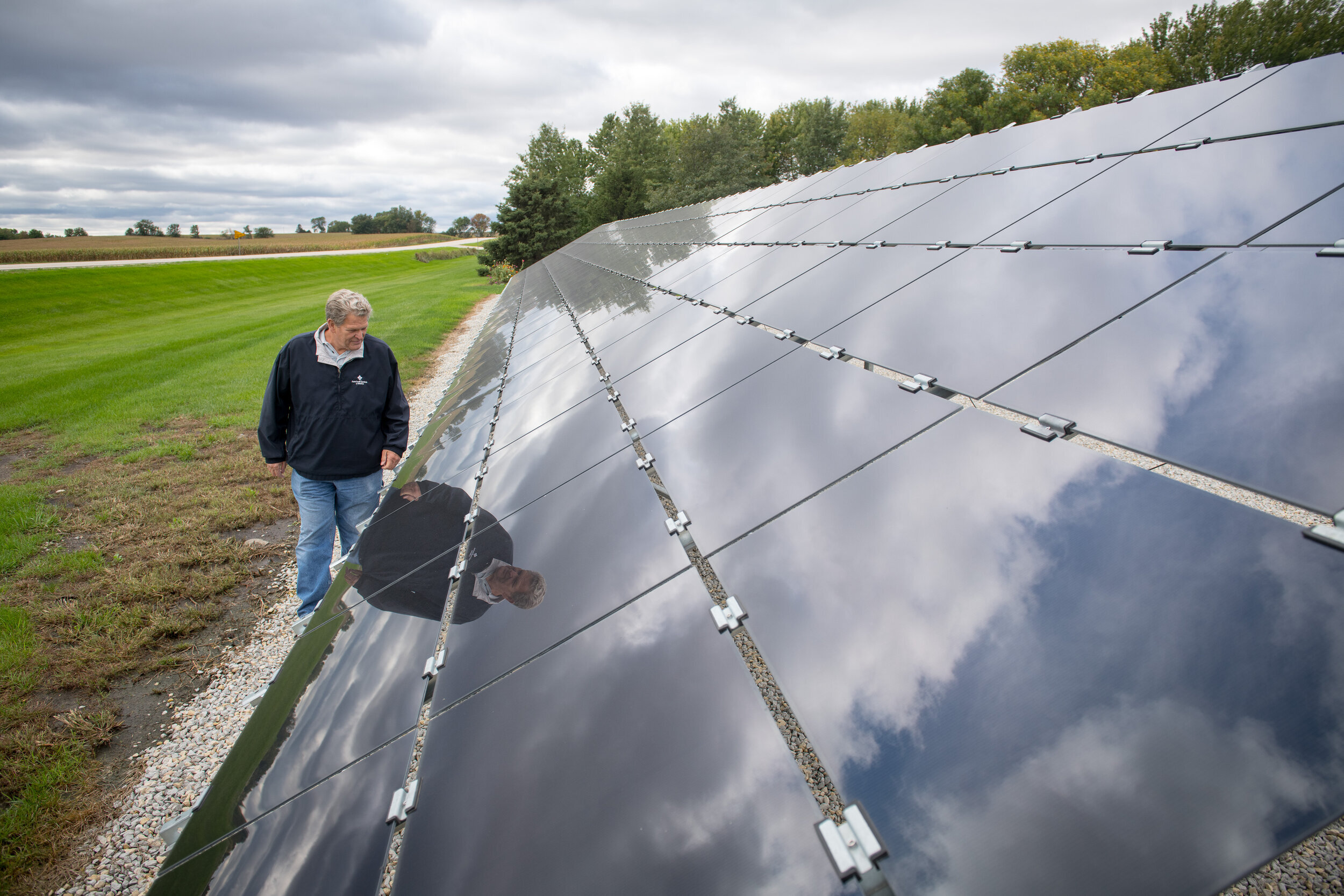Farmers harvest the sun with solar panels

Rick Juchems added solar arrays to his farm in 2019. (Photo: Joseph L. Murphy/Iowa Soybean Association)
Farmers know commodities. Planting soybeans, corn and other crops are the mechanisms for sustaining their operations. More and more, farmers are adding renewable energy to the list of commodities they farm.
Rick Juchems, a soybean, corn and pig farmer from Plainfield and Iowa Soybean Association director, recently incorporated renewable energy into his farm by installing solar generation. The installation was the culmination of 10 years of research that is now allowing him to farm the sun while adding money back into his pocket.
"I always want to conserve,” Juchems says. “Conserve our soil, conserve our water and other natural resources. I thought solar panels would be a good way to add to that philosophy.”
Photovoltaic (PV) solar panels are made of many individual solar cells. The cells are made of silicon and act like semiconductors found in computers. PV panels capture the sun’s energy and convert it into electricity.
Juchems installed three 120-feet long solar arrays in June. There are 540 individual solar panels in each array. They produce 63 kilowatts per hour of direct current (DC), which is converted to 42 kilowatts per hour of alternating current (AC).
The electricity produced powers his farm, and the excess energy is sold to MidAmerican Energy Company, which is Juchems’ electricity supplier.
“Most of the time, we are using all of the energy produced, especially in the winter when we are running the fans and aeration in the pig barns,” Juchems says. “During the summer, pit fans and circulation fans are running in the barns. It takes a lot of electricity to power the farm.”
Rick Juchems added solar arrays to his farm in 2019. Photo: Joseph L. Murphy/Iowa Soybean Association
Juchems used state and federal tax incentives to offset the cost of the solar array. He also applied for a federal energy grant.
“We had a $10.70 energy bill when we turned it on in August,” he says. “Before the solar panels our electric bill averaged $600 to $700 per month.”
Derek Sadler, a co-owner of Current Renewable Efficiencies (CRE), says farmers plan for input costs as they prepare for planting. Inputs like fungicide and fertilizer can be cut to save costs, but one input that is a constant for farming operations is electricity.
“We view electricity as another input," Sadler says, referring to the energy costs of running a farm.
CRE in Shell Rock has been supplying the hardware, engineering, analysis and installation of renewable energy for agriculture, commercial and private clients across Iowa for 10 years. About 80% of its business comes from the agriculture sector and much of that is from livestock farms.
“A lot of these farmers are looking beyond themselves,” he says. “They are looking to the next generation that is going to take over the operation. It is a way to take that expense away for them."
Originally published for the Iowa Food & Family Project: https://www.iowafoodandfamily.com/news/solar-power
For more than two decades, Joseph L. Murphy has had the pleasure of meeting and connecting with people from all walks of life through photography. He has photographed presidents and heads of state, traversed the winding alleyways of the Fes Medina in Morocco, photographed the sprawling countryside and people that make up Argentina and covered events that have defined the U.S. Most recently, Murphy’s travels have taken him to Cambodia, Mexico, China, Vietnam and Ecuador.
He has spent the past 20 years specializing in agriculture photography for multiple organizations, publications and marketing projects.
A graduate of the University of Iowa, Murphy determined at an early age that his love of photography would shape his vision for life.

